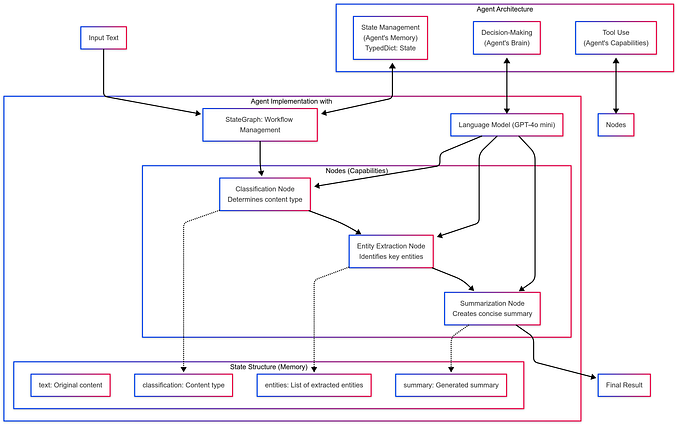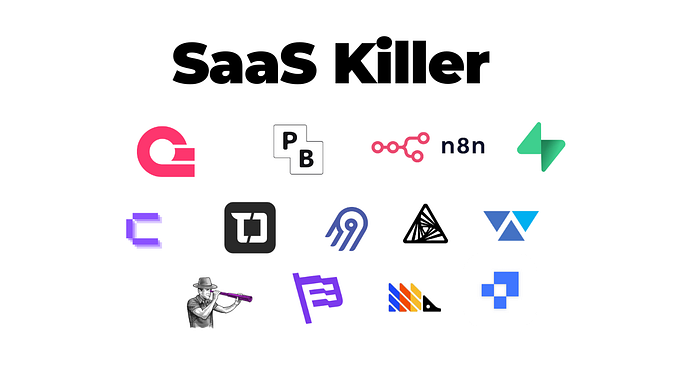In today’s data-driven world, information is power. With the exponential growth of data, organizations across various industries are realizing the immense potential of harnessing data analytics to improve efficiency. Whether it’s optimizing business processes, enhancing decision-making, or streamlining operations, data analytics has become a game-changer.
Enhanced Decision-Making
Data analytics is a game-changer when it comes to decision-making. In today’s fast-paced and complex business environment, organizations need to make decisions quickly and accurately to stay competitive. Enhanced decision-making is one of the key benefits of data analytics, and it’s transforming the way businesses operate.
Traditionally, decisions were often made based on gut feelings or historical data that may not accurately represent current market conditions. However, data analytics provides a data-driven approach to decision-making. It involves collecting, processing, and analyzing vast amounts of data from various sources, including internal databases, external market data, and even social media.
One of the primary advantages of data analytics in decision-making is its ability to provide insights based on real-time data. This means that organizations can make decisions that are not only data-driven but also up-to-the-minute. For example, a retailer can analyze sales data in real-time to adjust pricing strategies or inventory levels based on customer demand.
Furthermore, data analytics enables organizations to uncover hidden patterns and trends in their data. This can lead to the discovery of valuable insights that might have otherwise gone unnoticed. For instance, a healthcare provider can analyze patient data to identify correlations between certain lifestyle factors and specific health conditions, leading to more personalized treatment plans.
Optimizing Operations
Optimizing operations is a fundamental aspect of efficiency that can make or break an organization’s success. It involves the strategic management and refinement of various processes and workflows within a company to ensure that resources are used efficiently, waste is minimized, and productivity is maximized. Data analytics plays a pivotal role in this endeavor by providing valuable insights and actionable information to help organizations make data-driven decisions for operational improvements.
One of the key advantages of data analytics in optimizing operations is its ability to pinpoint bottlenecks and inefficiencies. Through the collection and analysis of data related to various operational processes, companies can identify where delays occur, which resources are underutilized, and where resources are being allocated in excess. This granular level of insight empowers organizations to make targeted changes that can have a significant impact on operational efficiency.
Moreover, data analytics enables real-time monitoring and predictive analytics. With the help of sensors, IoT devices, and data streams from various sources, organizations can gain immediate visibility into their operations. For instance, in manufacturing, sensors on machinery can transmit data about performance, allowing for predictive maintenance and reducing unexpected downtime. This proactive approach ensures that operational disruptions are minimized, ultimately saving both time and money.
Personalized Customer Experiences
- Customer Data: Collect and analyze customer data, including preferences, browsing history, purchase behavior, and demographics.
- Segmentation: Divide customers into segments or personas based on common characteristics or behaviors.
- Recommendation Engines: Implement recommendation algorithms to suggest products, services, or content tailored to individual customer preferences.
- Personalized Marketing: Craft personalized marketing campaigns, emails, and advertisements that resonate with specific customer segments.
- Dynamic Content: Use dynamic content on websites and apps to display tailored information and offers in real-time.
- A/B Testing: Conduct A/B testing to refine personalized experiences and optimize conversion rates.
- Customer Feedback: Encourage and gather customer feedback to continuously improve personalization efforts.
- Cross-selling and Upselling: Identify opportunities to cross-sell related products or upsell higher-value options based on customer preferences and behaviors.
Supply Chain Optimization
Supply chain optimization is a strategic approach used by businesses to improve the efficiency and effectiveness of their supply chain processes. It involves a series of actions and strategies aimed at maximizing the flow of goods and services from the supplier to the end customer while minimizing costs and enhancing overall performance. This critical aspect of business operations has gained increasing prominence due to globalization, customer demand for faster deliveries, and the growing complexity of supply chain networks.
Here are some key components and explanations related to supply chain optimization:
- Inventory Management: Efficient supply chain optimization requires careful management of inventory levels. Businesses aim to strike a balance between having enough stock to meet customer demand without overstocking, which ties up capital and storage space. Advanced forecasting techniques, demand planning, and just-in-time inventory systems are often used to optimize inventory.
- Demand Forecasting: Accurate demand forecasting is crucial for supply chain optimization. By analyzing historical data, market trends, and customer behavior, businesses can predict future demand more accurately. This allows them to adjust production and procurement levels accordingly, reducing the risk of stock outs or overstocking.
- Supplier Collaboration: Collaboration with suppliers is essential for supply chain efficiency. Building strong relationships with suppliers can lead to better pricing, improved product quality, and reduced lead times. Collaborative efforts often involve sharing information and working together to identify opportunities for mutual benefit.
- Transportation Management: Efficient transportation is a critical component of supply chain optimization. This includes selecting the most cost-effective shipping methods, optimizing routes, and minimizing transit times. Technology, such as GPS tracking and route optimization software, is often used to enhance transportation efficiency.
Healthcare and Predictive Analytics
Healthcare is an industry where every decision can have a profound impact on patient outcomes, and predictive analytics has emerged as a game-changer in this field. Predictive analytics in healthcare involves the use of historical and real-time patient data to identify trends, patterns, and potential risks. Here are some key aspects of how predictive analytics is transforming healthcare:
- Early Disease Detection: One of the most significant benefits of predictive analytics in healthcare is its ability to detect diseases at an early stage. By analyzing patient data such as medical history, genetic information, and lifestyle factors, predictive models can identify individuals who are at a higher risk of developing specific diseases, such as diabetes, cancer, or heart disease. Early detection allows for timely intervention and treatment, improving the chances of successful outcomes.
- Risk Stratification: Predictive analytics helps healthcare providers stratify patients based on their risk profiles. This means that instead of treating all patients the same way, healthcare professionals can prioritize care for those at higher risk. For example, a predictive model can identify which patients with chronic conditions are more likely to be readmitted to the hospital, enabling healthcare providers to allocate resources and support accordingly.
- Resource Allocation: Hospitals and healthcare systems can use predictive analytics to optimize resource allocation. By forecasting patient admissions, emergency room visits, and equipment utilization, healthcare organizations can ensure that they have the right staff and resources available when and where they are needed most. This leads to better resource utilization, reduced wait times, and improved patient experiences.
Financial Services and Fraud Detection
In the world of financial services, data analytics has emerged as a critical tool for safeguarding against fraudulent activities. With the increasing digitization of financial transactions and the growing sophistication of fraudsters, traditional methods of fraud detection have proven inadequate. Data analytics, however, offers a dynamic and proactive approach to identifying and mitigating fraud risks.
One of the primary ways data analytics revolutionizes fraud detection in financial services is through its ability to analyze vast amounts of data in real-time. Financial institutions process millions of transactions daily, and manually sifting through these transactions for suspicious patterns or anomalies is not only impractical but also prone to human error. Advanced algorithms and machine learning models can analyze these massive datasets swiftly and accurately, flagging transactions that exhibit unusual behavior.
Another crucial aspect of fraud detection in financial services is the use of predictive analytics. By analyzing historical transaction data, customer behavior, and market trends, financial institutions can build predictive models that identify potential fraud before it occurs. These models can detect subtle patterns indicative of fraudulent activities, enabling proactive measures to be taken, such as blocking a suspicious transaction or alerting the customer.
Online platforms for Data Analytics
IBM
IBM provides comprehensive Data Analytics courses, equipping learners with essential skills in artificial intelligence, machine learning, and data science. These courses lead to valuable certifications, empowering individuals to excel in the dynamic field of data analytics.
IABAC
IABAC provides comprehensive Data Analytics courses, encompassing skills in artificial intelligence, machine learning, and data science. Gain expertise and earn certifications for a successful career in the dynamic field of data analytics.
SAS
SAS offers diverse courses, skills, and certifications in Data Analytics, encompassing Data Science and Machine Learning. Elevate your proficiency and gain valuable credentials through their extensive educational offerings.
Peoplecert
Peoplecert offers a wide range of courses, skills, and certifications in Data Analytics. Elevate your proficiency in data analysis and gain valuable credentials to excel in the field of data-driven decision making.
Skillfloor
Skillfloor offers extensive Data Analytics courses, skills, and certifications. Gain proficiency in data analysis techniques, statistical tools, and data visualization. Elevate your career with their comprehensive training and recognized certifications.
Data analytics is more than just a buzzword; it’s a transformative force reshaping the way organizations operate. By harnessing the power of data, businesses can make more informed decisions, optimize their operations, enhance customer experiences, and achieve unprecedented levels of efficiency. As technology continues to advance, data analytics will only become more integral to the success of organizations across all industries. Embracing this data-driven revolution is no longer an option but a necessity for those looking to stay competitive in the modern business landscape.







